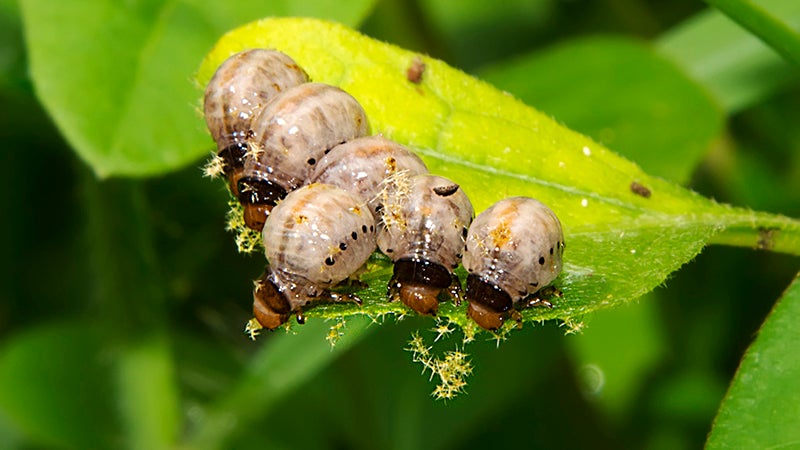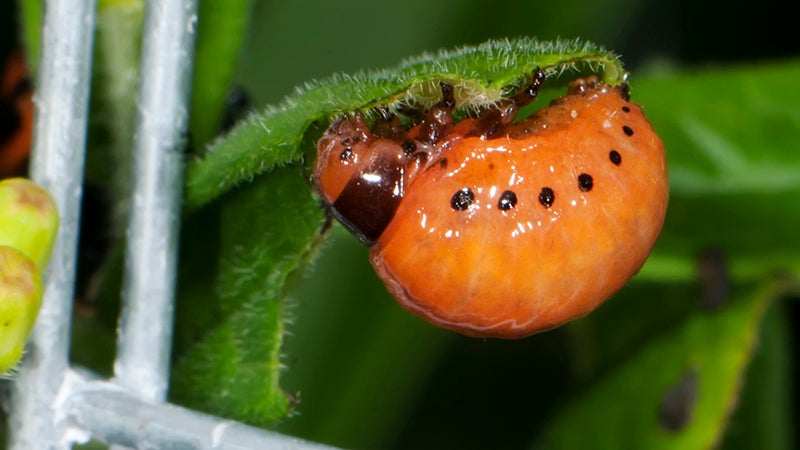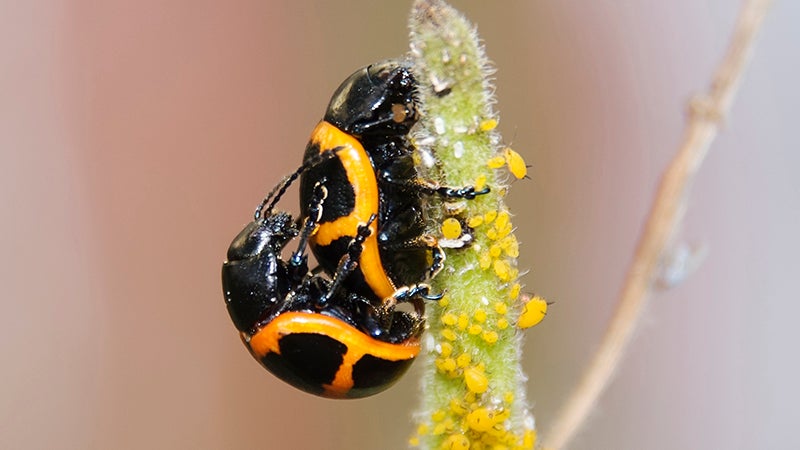Beetles or butterflies?
Published 7:23 pm Saturday, July 28, 2018
|
Getting your Trinity Audio player ready...
|
Helen Hamilton
The Swamp Milkweed Leaf Beetle Labidomera clivicollis is a voracious feeder of milkweed leaves and somehow the milkweeds in my small yard have been chosen as their favorite habitat. I started early this year, trying to control their population, but it seems the battle is only beginning. Here’s my story.
Several years ago we were traveling during the season when milkweed plants were thinking about blooming. Returning weeks later, the blooms were finished and so were most of the leaves, the stems covered with shiny black and orange beetles happily chewing away. All three milkweed species, each with maybe a dozen plants, were down to bare stems.
Next year, same thing … we were traveling in the spring but returned to see the start of the milkweed leaf beetle invasion. I tried picking them by hand, but there were too many and lots of larvae on the underside of the leaves. Soap spray, horticultural oil spray, only stopped them for a day or so and back they came. Another disastrous year.
Sent an email to Dr. Doug Tallamy, asking how I could control these beasts. He questioned my identification, so I sent him photos, he agreed, and told me I was fortunate to have a native beetle in my yard, since he does not see that species in Delaware. Not to worry, he said, the milkweeds are perennials and will return next year. This was not the response I was seeking from Dr. Tallamy, but realizing he is an entomologist, I gave up and tried very hard to save the few remaining stems, with not much success.
This year we were home in early spring, and a lot of milkweeds, mostly Asclepias syriaca appeared all over the front garden, into the pathways and out into the asphalt roadway. As they grew, I went on patrol, and when the flowers appeared, along with bees, wasps and flies, I inspected each plant at least once and often three times daily. The first sighting was of a pair of beetles eating and mating — very bad news, they lay a lot of eggs, that grow into ugly brown larvae on the underside of leaves. The pair was not very well attached and fell off before I could kill them.
So, the beetles appeared, one by one, allowing me to pick them off by hand, squishing them underfoot, and the larvae as well. In the past I have dropped them into jars of oil or soapy water and watched them die, but a quick death is better for them and easier for me. Any fresh cuts on the leaves meant there were adults or larvae on the underside — a telltale sign of their activity.
But there were only a few each day, and sometimes none, so all the plants grew vigorously with multiple blooms. Now the blooms are fading, and here come the beetle larvae. Out on patrol this morning (June 16) I found dozens of larvae in different stages. I found only one small adult, possibly the second generation just emerging.
These beetles have four stages in their life cycle. They overwinter as adults emerging in the spring to lay orange tubular eggs on the underside of milkweed leaves (I have not yet found these.) As the eggs hatch the larvae go through three stages, chewing milkweed leaves down to the stems. The last instar drops to leaf litter to pupate. They range over eastern North America to New Mexico, making only one generation each season, but usually two generations in the south.
The only control is hand-picking as any chemical applied will affect other insects, and many are predators of this beetle. The battle is far from over, but each leaf that I save will be food for monarchs.
HELEN HAMILTON is past president of the John Clayton Chapter, Virginia Native Plant Society. Contact her at helen48@cox.net. For more information about native plants, visit www.vnps.org.




